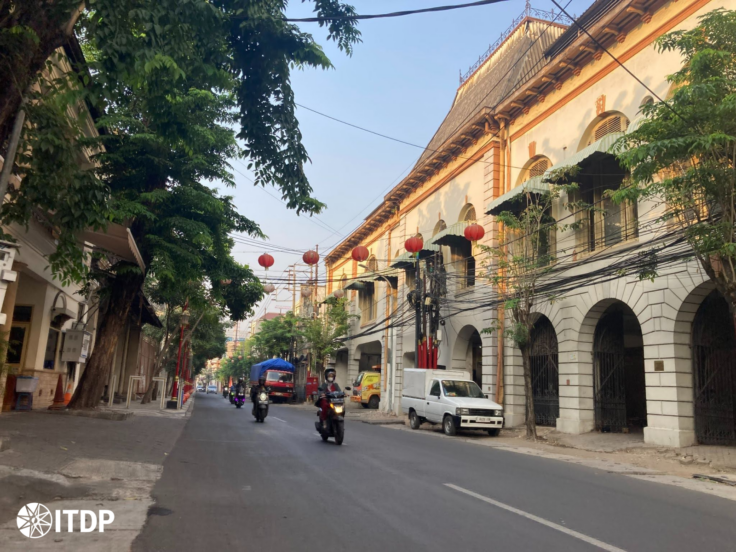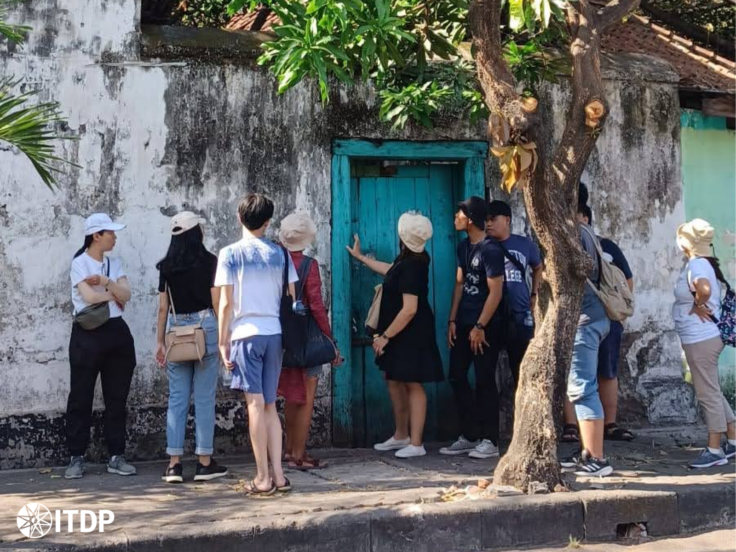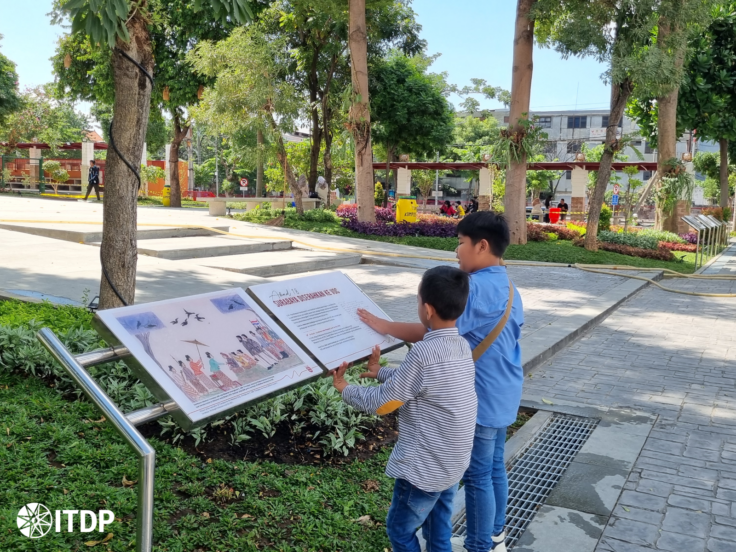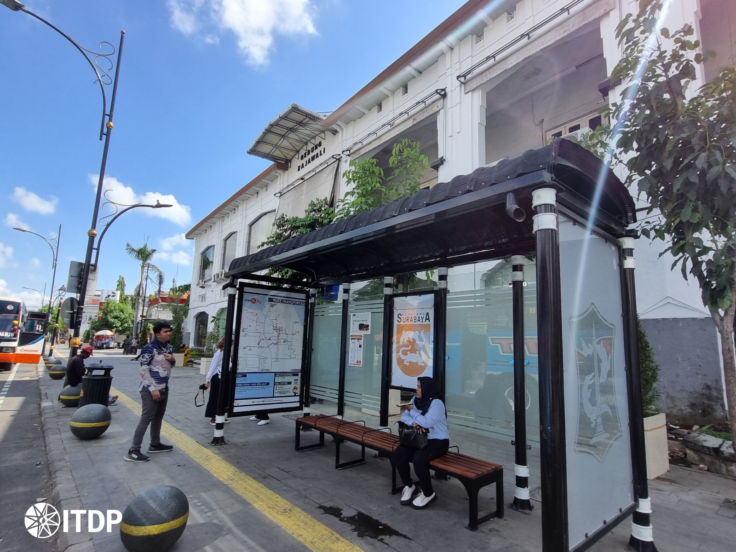October 03, 2024
How Sustainable Mobility Supports Tourism in This Indonesian City
How can more pedestrians, cyclists, and public transit-oriented development help support the growth of tourism areas in cities?
A version of this article was originally published by ITDP Indonesia here.
There is a crucial role for sustainable transport options in facilitating and encouraging more urban tourism. Intracity travel is, of course, essential in tourism as it involves moving people to and from busy hubs (tourist sites or hotels) who may not be very familiar with the locale. Apart from tourism management, the most crucial factor in the development is the quality and accessibility of transport infrastructure like buses, rail, and walking and cycling networks. Public transport can often be considered the most suitable mode for tourists and popular areas because it is accessible to everyone and can move large amounts of people quickly – relative to individual cars or vehicles – allowing more ease of access to primary destinations.
Besides public transport, a 2021 World Bank report suggests that focusing on active mobility infrastructure like walking and cycling offers a variety of social and economic benefits to tourists and residents alike, and better infrastructure can increase positive perceptions of a city. For instance, surveys in a historic area in Istanbul, Turkey found that 68% of visitors felt more comfortable and 66% spent more time in the area after pedestrian improvements. Active mobility thus can also generate significant economic impacts from tourists spending more time in a district.
The team at ITDP Indonesia has been assessing such outcomes in their work in the city of Surabaya, Indonesia, home to nearly three million people, to understand the effects of improvements to street and mobility networks on the city’s primary historic and tourism district.

The Case of Surabaya’s Old Town
Old Town is a district in the city known for its diverse architectural buildings, culinary spots, and historic cultural activities. This area has been recognized as a Strategic Socio-Cultural Area in Surabaya’s RPJPD development plan for 2005-2025 and designated as a cultural heritage site by the Surabaya Cultural, Youth, Sports, and Tourism Department. With this historical and cultural heritage, the area holds significant possibility as a tourist destination. To maximize the potential in Surabaya’s Old Town, infrastructure development that caters to pedestrians, cyclists, and public transport is essential. The Surabaya City Government began a revitalization project for the Old Town in 2023, aiming to improve accessibility and enhance its appeal to tourists and residents alike.
In 2023, ITDP Indonesia had the opportunity to collaborate with the Surabaya City Government on the development of the Old Town area, providing recommendations for planning and construction with a focus on enhancing connectivity through sustainable transport modes. When visiting the Old Town area, ITDP identified that promoting the use of public transport and encouraging the expansion of non-motorized transport networks was crucial to the area’s future growth. Encouraging more non-motorized transport like walking and cycling ultimately helps reduce pollution, increase safety, and enhance the area’s overall comfort for people to want to spend time there.

ITDP Indonesia engaged with city agencies related to transport, planning, tourism, and culture on opportunities for improved mobility in Old Town.
On-the-Ground Research
Understanding the perspectives of various stakeholders involved in the development of this area — including residents, visitors, locals who live and work within the area, and expert planners — was key to formulating recommendations for the re-development of the Old Town area. During the discovery phase, ITDP engaged with several government agencies related to transport, planning, tourism, and culture on their views of the current challenges and future opportunities in the area. These discussions focused on aligning visions, planning, and actions to ensure cohesive development that meets the needs of the area’s users, whether they are residents, workers, or visitors. To dive deeper, ITDP conducted field surveys and gathered information through discussions and site visits with local communities. Additionally, surveys and interviews with Old Town Area visitors were carried out involving local pedestrians and tourism groups.
The team then assessed existing pedestrian experiences and other development opportunities in various Old Town districts. Through these visits and surveys, key challenges were identified related to pedestrian accessibility, including difficulties with crossings and safe pedestrian pathways. Low safety perceptions among pedestrians were primarily due to the dominance of motorized vehicles, high-speed traffic, and the lack of clear signage and lighting. Many visitors end up relying on private vehicles as well due to the limited public transport options available, compounding the inaccessibility of the area. Pedicabs, however, were found to be an ideal development option for tourism in the area because they aligned well with the historic charm and have zero emissions.
The team also found that there were only two public transport options serving Old Town. Both networks’ stations were not within comfortable walking distance of all parts of the district. This adding more public transport modes and stops serving Old Town could increase visitor numbers and improve connectivity between other neighborhoods in Surabaya. Improving street accessibility is also a crucial element. This includes safer pedestrian facilities on roadways and the addition of comfortable, secure, and inclusive crossing facilities. Interventions to enhance pedestrian awareness should be tailored to each road’s characteristics with comprehensive information systems that relay points of interest, transit options, and tourist routes.


Beginnings of a Transformation
ITDP’s report to the city in 2023 synthesized all of the issues from the stakeholder and user research, presenting six main recommendations that highlight connectivity, safety, accessibility, and activity improvements within Old Town. Following these recommendations, the city began detailed planning and construction in Old Town throughout the following months. ITDP had the opportunity to attend the launch of the first revitalized sections Old Town in mid-2024, where they observed that people and tourists felt more comfortable exploring the area with improvements in bus stops, pedestrian pathways, roadways, and intersections. Historic streets were enhanced for visitors with better wayfinding and signage, information on the area, and improved lighting and landscaping. These efforts to enhance the public and street space experience in Old Town were tangible and marked the promising start of much more work to come.
The revitalization of Old Town marks a new stage in Surabaya’s development with sustainable transport at its core, which in turn can serve as a model for more Indonesian cities.
